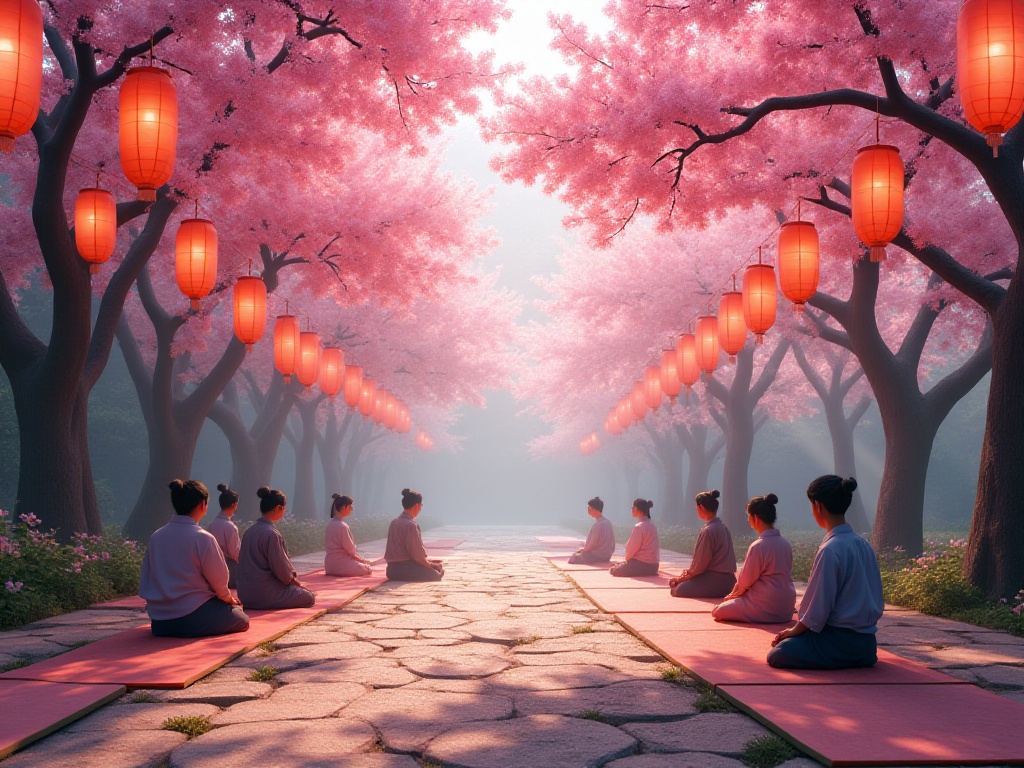
The Beginning
In early winter 2024, I traveled alone to a remote town in Hokkaido, Japan. The winters here are particularly cold, but the warmth of the local people made me feel incredibly welcome. In this town surrounded by mountains, I met 84-year-old grandmother Matsumoto Kazuko. She hosted me through the "Elderly Home-stay Program," which aims to help foreigners like me who want to experience Japanese life and learn the language to gain a deeper understanding of Japanese culture.
Grandmother Kazuko had been living alone for many years. Her husband passed away years ago, and her children had settled in Tokyo for work. During video calls with her children, she would always say she was doing well, but I could sense a hint of loneliness in her eyes. When I asked why she joined this home-stay program, Grandmother Kazuko smiled and said, "At my age, my greatest wish is to chat with young people and hear about the outside world."
First Meeting
I remember that evening when I arrived at Grandmother Kazuko's house, dragging my suitcase through the falling snow. From a distance, I could smell the warm aroma of miso soup. When I opened the door, I saw Grandmother Kazuko busy in the kitchen, wearing an apron with cherry blossom patterns, her silver-white hair neatly tied back. Hearing the door open, she immediately turned around and said in somewhat hesitant English, "You must be hungry? Have some hot soup to warm up first."
The steaming bowl of miso soup contained tofu, seaweed, and green onions - the most traditional Japanese flavor. The moment I drank it, I felt my whole body warm up. Grandmother Kazuko sat across from me, smiling as she watched me drink the soup, her kindly appearance reminding me of my own grandmother back home. At that moment, I knew this month-long stay would be very warm and welcoming.
Grandmother Kazuko's house is a traditional Japanese building. Though it's quite old, it's well-maintained. The hallways are covered with tatami mats, and calligraphy works that she wrote in her younger years hang on the walls. She arranged a room for me on the second floor - though small, it was very neat, and she had even placed a potted plant by the bedside, making it feel especially cozy.
Language Breakthrough
Although Grandmother Kazuko could speak some English, we made an agreement to communicate only in Japanese. This decision gave me quite a hard time in the first few days. Sometimes words would be on the tip of my tongue, but I just couldn't express them. More embarrassingly, there were times when I wanted to say "I like it" but accidentally said "I hate it," making Grandmother Kazuko laugh heartily.
But Grandmother Kazuko was always patient, never showing frustration at my language barriers. Whenever I made mistakes or didn't understand, she would repeat her explanations using simpler words until I fully understood. She would also deliberately slow down her speaking pace to help me better follow her rhythm.
Gradually, I was amazed to discover my Japanese improving rapidly. According to my daily learning journal, in just one month, my Japanese vocabulary increased from 800 words to 2,300. These words weren't memorized by rote but naturally acquired through daily life. For example, the interjection "あら" (ara/oh), which I now use quite authentically thanks to Grandmother Kazuko's influence.
What delighted me even more was that I learned not just standard Japanese but also many local Hokkaido dialects. These are things you absolutely cannot learn in language schools. I remember once at the supermarket, I used a local dialect while talking to the cashier, which surprised them so much they kept praising how authentic my Japanese sounded.
Daily Life

Morning Service
Life at Grandmother Kazuko's house was very regular. Every morning at 5 AM, regardless of the weather, Grandmother Kazuko would punctually wake up to attend morning service at the nearby temple. At first, I thought it was too early and often slept in, but under her influence, I gradually developed the habit of waking up early.
The temple was about a ten-minute walk from home. The town streets were especially quiet in the early morning, with only our footsteps and occasional bird songs to be heard. The temple was small but elegant, with several old cherry blossom trees planted in front. Although the trees were bare in winter, Grandmother Kazuko said that in spring, they would be full of pink blossoms, beautiful like a painting.
I attended morning service with Grandmother Kazuko several times. Although I couldn't fully understand the monks' chanting, I was deeply fascinated by the peaceful atmosphere. Listening to the sutras in the morning light, watching the incense smoke rise, it felt as if my entire spirit was being purified. Through these experiences, I gained a deeper understanding of traditional Japanese culture and why Japanese people place such importance on spiritual cultivation.

Shopping for Groceries
Grandmother Kazuko particularly enjoyed taking me to the local farmers' market. Though not large, the market had a complete variety of products, many of which were fresh vegetables grown by local farmers. Each time we went to the market, Grandmother Kazuko would teach me about different ingredients, telling me their Japanese names and cooking methods.
At the market, I learned many everyday expressions. For example, "もう少し安くなりませんか" (Could you make it a bit cheaper?) for bargaining, and "これは甘いですか" (Is this sweet?) when selecting fruits. The vendors were all very friendly, and knowing I was there to learn Japanese, they would often chat with me and teach me authentic expressions.
Once, a fishmonger specially taught me how to say "delicious" in Hokkaido dialect. He said while it's "おいしい" in standard Japanese, in Hokkaido dialect you can say "なまら うまい". These details made my Japanese learning more interesting and vivid.
Watching TV
During leisure time after dinner, Grandmother Kazuko's favorite activity was watching NHK news programs and morning dramas. At first, I found it boring because I could understand very little. But Grandmother Kazuko suggested I keep watching, saying it was a good way to improve listening skills.
Sure enough, through watching TV programs every day, my listening ability improved significantly. Grandmother Kazuko would explain difficult words and phrases while watching, and sometimes share her views on news events. After a month, I could understand 70% of the news content, a progress that surprised even myself.
Especially those morning dramas, although the plots could be melodramatic, they taught me many natural expressions used in daily conversations. For example, "お疲れ様です," a greeting commonly used in workplaces - through the dramas, I understood its specific usage in different situations.

Unexpected Gains

Cultural Immersion
During my stay at Grandmother Kazuko's house, I not only learned authentic Japanese but also deeply experienced traditional Japanese culture. Grandmother Kazuko taught me many traditional etiquettes, such as how to properly wear a yukata, how to gracefully serve tea in tea ceremony, and even how to make wagashi.
I remember once when Grandmother Kazuko specially took me to a local tea ceremony class. There, I learned the basic etiquettes of tea ceremony, such as how to correctly rotate the tea bowl and how to drink tea with proper posture. These seemingly simple actions all contain deep cultural meanings. Through these experiences, I gained a deeper understanding of many polite expressions in Japanese.
Grandmother Kazuko also taught me how to make traditional wagashi. Watching her skillfully knead dough, prepare fillings, and shape the confections, I deeply appreciated the Japanese focus and meticulousness towards work. During the process, I also learned many Japanese food-related vocabulary, such as "こね" (kneading) and "あん" (sweet bean paste).

Intergenerational Exchange
Grandmother Kazuko loved telling me stories from her youth. Through her narratives, I learned about Japan's post-war development. She said when she was young, Japan was still poor, but it was the efforts of that generation that created today's prosperous Japan.
What particularly impressed me was Grandmother Kazuko's personal experience during Japan's period of rapid economic growth. She worked in a textile factory then and witnessed the rise of Japanese manufacturing firsthand. While listening to these stories, I not only improved my Japanese but more importantly gained a more three-dimensional understanding of Japanese society.
Grandmother Kazuko also kept many old photographs, and through these yellowed photos, I felt transported back to that era. Looking at the young Grandmother Kazuko wearing kimono in the photos, I often found it hard to connect her with the kind elderly lady of today. These photos were not just her personal memories but also witnesses to the changes in Japanese society.
Insights
This month-long homestay made me deeply realize that the most effective way to learn a language is complete immersion in the target language environment. My Japanese improved more during this time at Grandmother Kazuko's house than it would have in a year at language school. Being able to apply what I learned in real life situations every day made this learning method much more effective than pure classroom learning.
Through this experience, I discovered that language learning shouldn't be limited to textbooks and classrooms. Learning language in real life not only teaches the most authentic expressions but also helps understand the cultural connotations behind the language. For example, while the Japanese honorific system seems complex, using it naturally in daily life reveals how it reflects Japanese society's hierarchical concepts and etiquette culture.
Although this immersive language learning method may face some difficulties at the beginning, perseverance will surely exceed expectations. During my month at Grandmother Kazuko's, I not only improved my Japanese but also gained a precious cross-generational friendship. On the day I left, Grandmother Kazuko specially prepared a gift for me - her handwritten calligraphy that read "継続は力なり" (Persistence is strength).
Research shows that living in the target language environment for one month equals half a year of classroom learning. Moreover, language learned through life scenarios is remembered more deeply and used more naturally. This learning method not only improves language skills but also cultivates cross-cultural communication abilities.
If you also want to learn a foreign language, I recommend trying this kind of deep experiential learning method. Find a language environment where you can fully immerse yourself, even if only for a short month, it can bring unexpected gains. Don't be afraid of making mistakes, because every error is a learning opportunity. As Grandmother Kazuko often said, "間違えることは、学びのチャンスです" (Making mistakes is an opportunity to learn).
Remember, language is not just a communication tool but also a key to understanding a culture. Through genuine interactions with locals, you can gain far more than just the language itself. In this process, you'll find yourself not only learning a language but also understanding a nation's way of thinking and attitude towards life. Just like my month at Grandmother Kazuko's, I not only learned authentic Japanese but also gained a deeper understanding of Japanese philosophy and life wisdom.
Looking back now, that month was like a wonderful cultural journey. Although it wasn't long, it left me with unforgettable memories for life. I believe this kind of deep cultural experience and language learning method will give us a deeper understanding of the world and make us better cross-cultural communicators.
Next
Learning Languages in Foreign Lands: An Immersive Experience Shared by a Travel Blogger
Explore the dynamic relationship between travel and language learning, examining how immersion enhances language skills and how linguistic abilities deepen travel experiences through cultural engagement and authentic interactions
One Person's Language Journey: Measuring the World with Footsteps, Making Travel the Best Language Classroom
Explore effective methods and benefits of learning languages through travel, combining immersive strategies with practical approaches, supported by digital tools and structured resources for enhanced language acquisition and personal growth
One Person's Language Learning Journey: My 90-Day Immersion Experience in a Rural Japanese Town
Explore how travel facilitates language learning through immersive environments, covering natural and structured learning methods, along with guidance on choosing suitable language programs and courses to enhance language skills while traveling
Next

Learning Languages in Foreign Lands: An Immersive Experience Shared by a Travel Blogger
Explore the dynamic relationship between travel and language learning, examining how immersion enhances language skills and how linguistic abilities deepen travel experiences through cultural engagement and authentic interactions

One Person's Language Journey: Measuring the World with Footsteps, Making Travel the Best Language Classroom
Explore effective methods and benefits of learning languages through travel, combining immersive strategies with practical approaches, supported by digital tools and structured resources for enhanced language acquisition and personal growth

One Person's Language Learning Journey: My 90-Day Immersion Experience in a Rural Japanese Town
Explore how travel facilitates language learning through immersive environments, covering natural and structured learning methods, along with guidance on choosing suitable language programs and courses to enhance language skills while traveling



